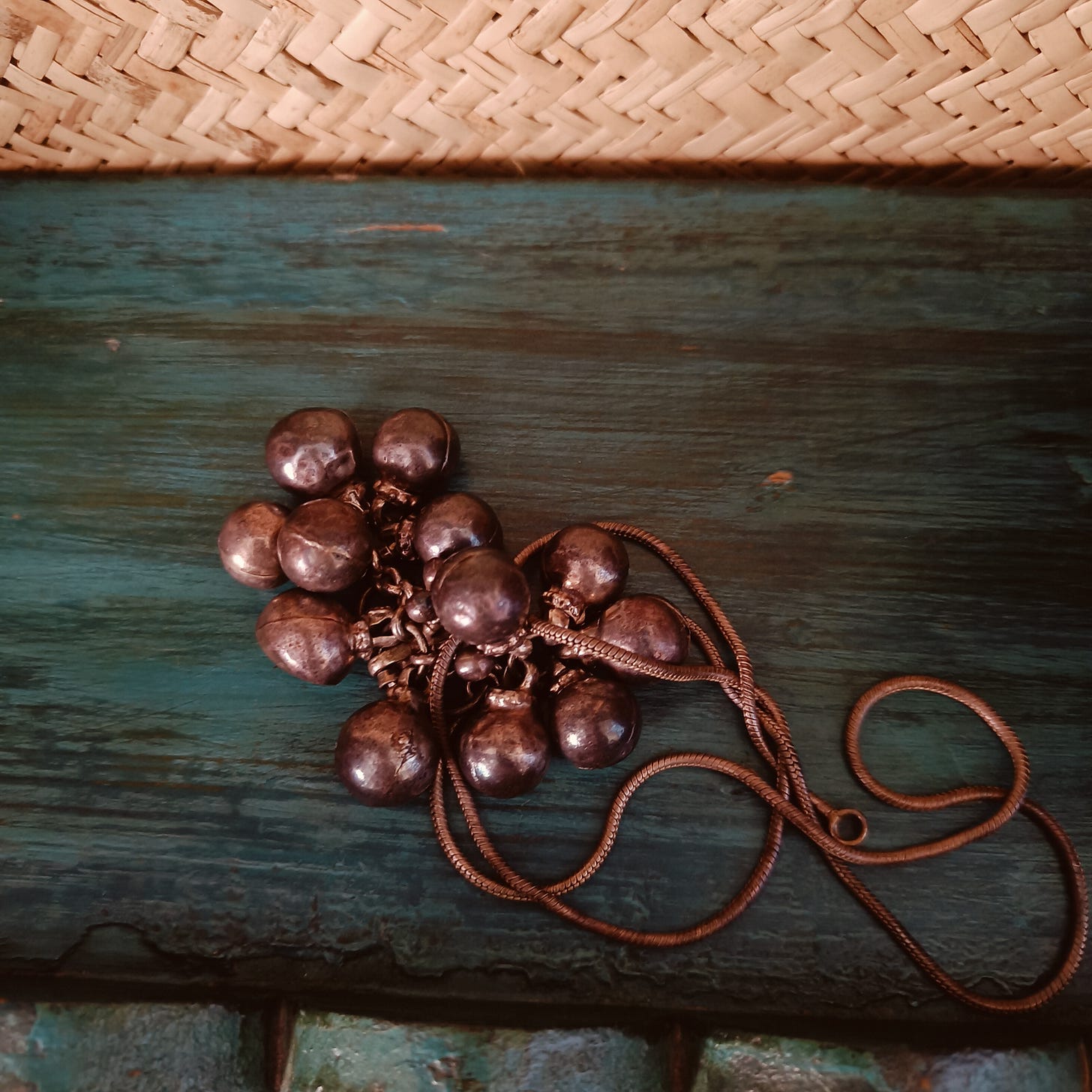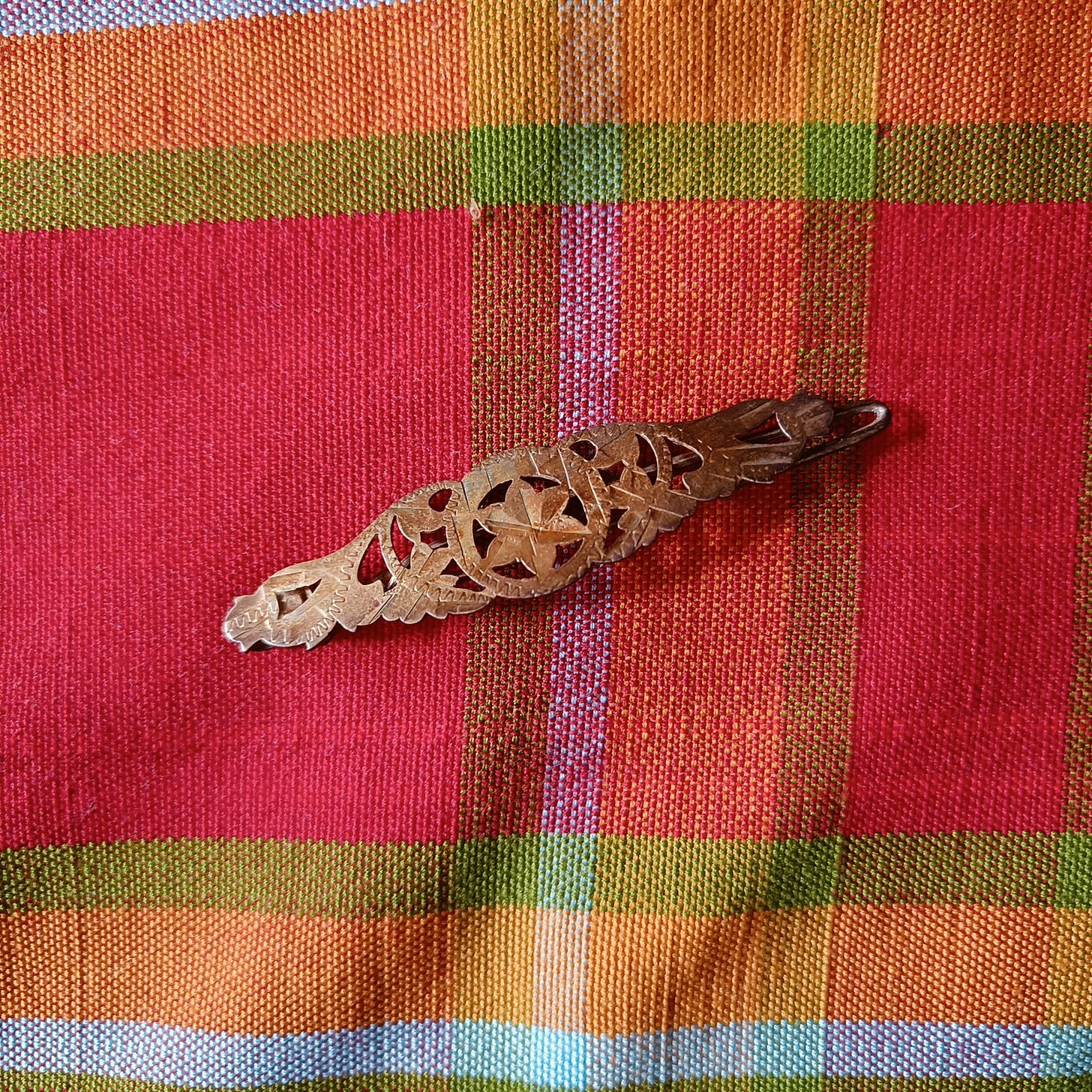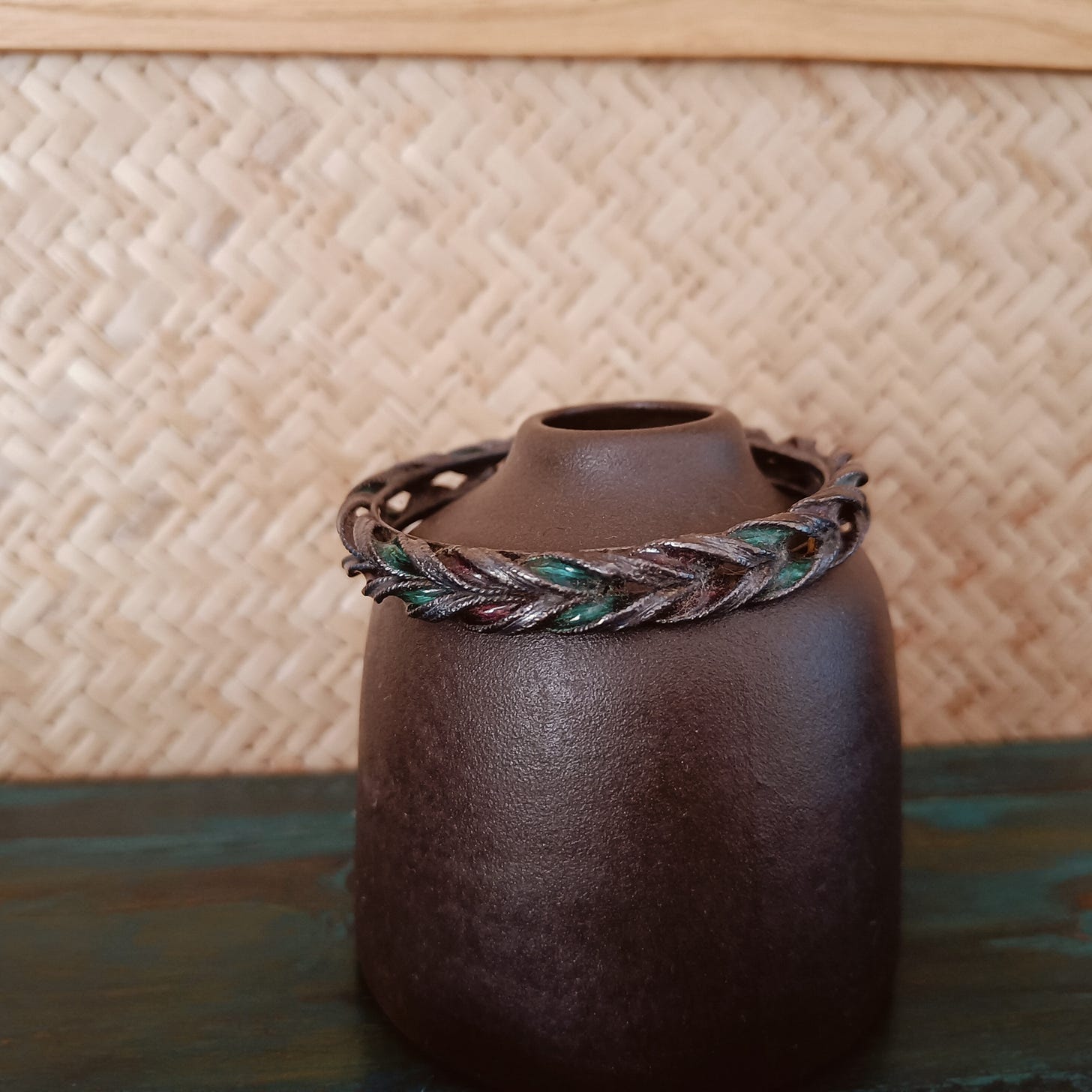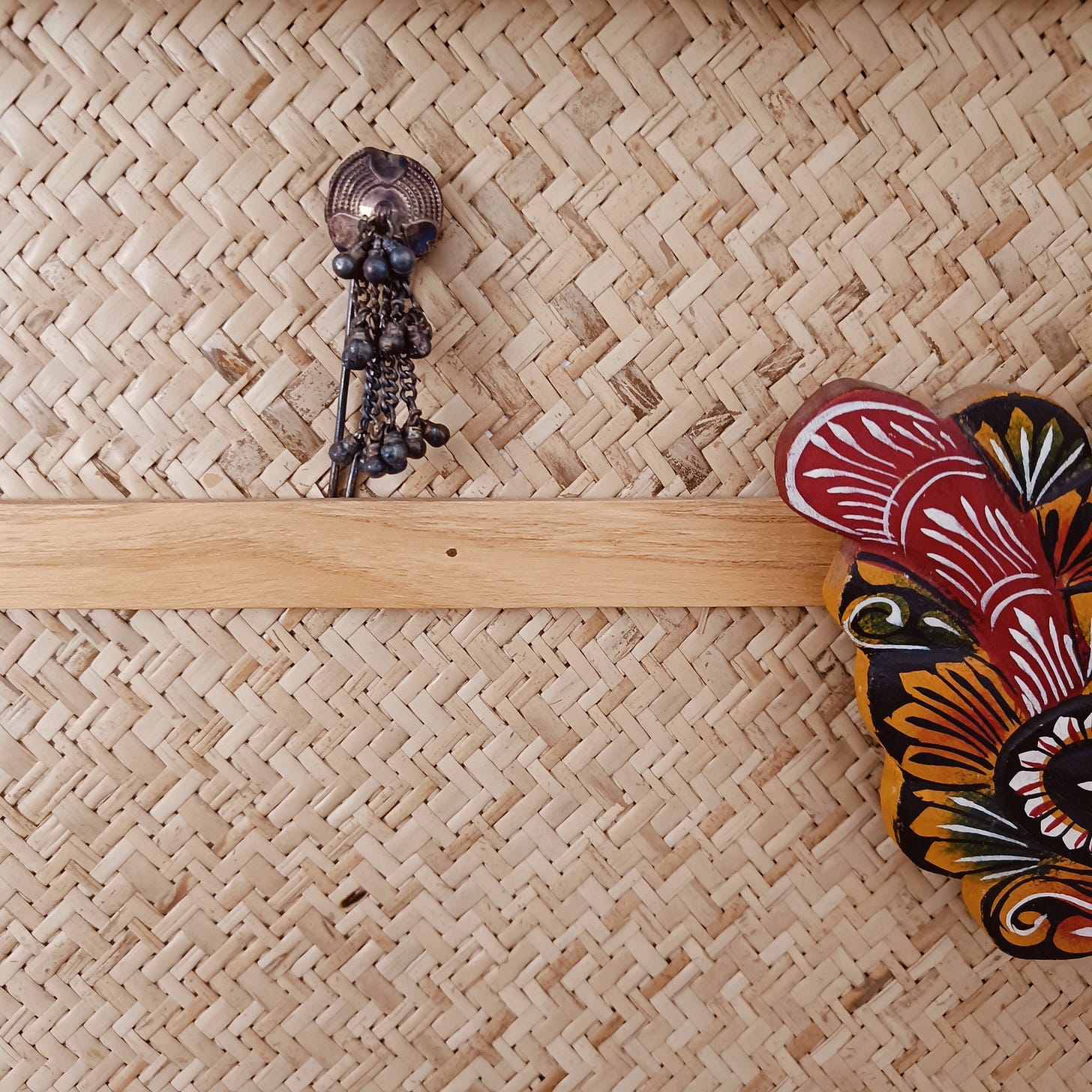Patchwork Legacies
Nani ne Mummy ke liye rakha tha. Someone once told me this about a ring, their voice full of pride and affection. People in life and in the movies speak so movingly about things passed down through generations. It almost felt like a universally experienced privilege—like everyone carries at least one piece of material history with them from their parents, if not generations before them.
My parents, like many others of their time, had to leave home to build or find a home. As a young boy, my father ran away from home multiple times before his maternal uncle in Delhi gave him a fresh start. My mother, one of ten siblings, was whisked away by her sisters who were nuns and sent to a hostel in Tamil Nadu to complete her education. This gave her a chance to decide the course of her life and evade the “Do you want to join a convent?” question. Later in life, their common friends proposed the alliance between this tenacious pair of rescues and runaways, and they were married with the help of their siblings in Delhi. The only support from their parents was approval from a distance.
Most of my childhood, we were about six to eight people living out of two rooms. Younger relatives stayed till they found a toehold in this city and moved away when they could afford to. The railway station featured prominently in our lives. The young arrived on the Kerala Express, carrying with them coconuts, some dried fish, maybe pickle, and chips for the children. Love was passed on in consumables. My maternal grandparents could never visit, and the paternal ones travelled the distance just once. When my ammachi passed, we were almost adults. It occurred to my sister to ask for a piece of her clothing—a chatta (a blouse worn by some Nasrani women in Kerala, now rare). It is the only material object we have from my father’s home. From my mother’s home, there are two brass vessels my mother requested after her mother passed. Recently, the ancestral house was brought down. I asked my uncle if he could save me a tiny piece of wood from it. Of course, he didn’t take me seriously. Of course, I didn’t tell him how much it would mean to me. He wouldn’t get it. I barely do. What is material legacy for migrants who nest far away from home? I don’t know why this feels significant. I don’t have an answer.
As a student, I began to stumble upon what could have been other people’s inheritances and legacies. In a village in Dungarpur, Rajasthan, I stopped to poke about in a silversmith’s workshop, my travel money tightly clenched. I asked about a pair of bangles covered in dust. He told me they weren’t pure silver and were second-hand. I wanted them immediately. I didn’t stop to think about the whys then, but this started off a trail of snooping around in jewellers in village markets or sarafa bazaars in small towns—looking for old payals, or a bichia with a missing pair, a chain, anything that was pre-worn and bore the mark of a place and time.
This treasure hunt without maps and clues was most exciting. When I found something, I dreamt up histories for the piece. Mostly, I felt a false sense of kinship across geographies, caste, and class. Where I come from, jewellery (gold/silver) is usually gifted in dowry, sold in distress, or exchanged for newer pieces. There was no dowry at my parents’ wedding. They supported their own wedding and siblings sold jewellery to make it happen! Later in life Ma had to earn her own jewellery—every last bit of it—and then sell it off to rescue us. Repeatedly. My father built his life supported by an uncle and didn’t really get any concrete support from his home. I imagined families like ours strewn around the country, selling or pawning off jewellery to replace history with the possibility of a future. As I travelled, I accumulated what I imagined were found legacies. What once belonged to another, I cradled safely in my palms.
Papa has been a civil contractor and made furniture. He loves experimenting. For most of our lives, our homes were a curious mix of furniture—experiments, pieces meant for elsewhere or made from leftovers. We renovated our home two to three years ago. It was time to finally think about the home we wanted—the kind of furniture all of us wanted. Not a collage of experiments, impulses, and pragmatisms, but a home for realized dreams and lives that lay ahead. We squabbled over every detail—tiles, sinks, tables, and fixtures. It was messy, but it got done. No one ran away, though everyone was tempted.
I later saw a running theme in what we agreed on for our home renovation. We designed our living room around the first piece of furniture my parents bought—two chairs that had been gathering dust for years in a furniture shop known to my father. My sister and I added to the room another second-hand piece - a center table. This home still bears the print of the many my parents built with their experiments and mix-and-match. Maybe that is our legacy. The parents took chances, supported each other, and built small, material legacies alongside larger social ones. They built a home that shapeshifted with time and called us back to roost and rest and occasionally fight. They raised unconventional women who questioned ideas of marriage and family and, through trial and error, created their own definitions. The parents mourned the loss of the conventional but grew to love and celebrate the alternatives and the people that became family without blood ties or marriage.
This sense of an inheritance of experimentation and patchwork legacies came together starkly about a decade ago. It was Onam, and our table had a surreal mix of faiths and regions. Our Sadya also had Eid ki Biryani and alcohol. I wore my Papa’s kasava mundu, a half of ma’s set-mundu and earrings gifted by a much-loved Kutchi ex-mother-in-law, who, like my parents, taught me the art of adapting traditions to fit our selves.
As second-generation migrants, we start from where we find ourselves. We take from all the soil we may have moved around in and carry with us second-hand memories of a place that used to be home to our parents. The home we have is many things, and most of it is built by us one piece at a time.
The last time I went snooping in a jewellers’ lane, I picked up silver hairpins. The jeweller could barely hold back a smile- I had a closely shaved buzz cut. Someone’s hairclips lie safe with me and are used as brooches, as I wonder what happened to the ornate, metal brooches my Nasrani grandmothers wore. These are the experiments that make us, a reminder of the many we are made off and the freedom to be the many we can be. That’s a legacy I can hold close.
******







Oh Roshni . There is so much here to hold on to , to build on and to fill the heart . So many lives coming home to you . So much love in this piece .
This was so warm. I almost want to read this every time I want to buy some stuff without any history attached to it.